

Le Berghain à Berlin et l'éthique du «no photos» À l'heure du triomphe d'Instagram, comment le meilleur club techno du monde peut-il être un trou noir photographique ?
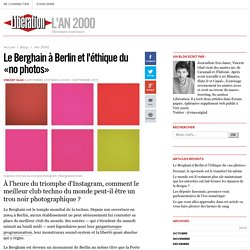
Le Berghain est le temple mondial de la techno. Depuis son ouverture en 2004 à Berlin, aucun établissement ne peut sérieusement lui contester sa place de meilleur club du monde. Ses soirées — qui s’étendent du samedi minuit au lundi midi — sont légendaires pour leur gargantuesque programmation, leur monstrueux sound-system et la liberté quasi absolue qui y règne. Le Berghain est devenu un monument de Berlin au même titre que la Porte de Brandebourg, Checkpoint Charlie ou Angela Merkel. Tous les week-ends, des milliers de touristes déferlent sur le club et tentent d’échapper au «Nein» du physio en chef, Sven Marquardt. Trou noir photographique. Current Issues. Climate Change // The Anthropocene and the Sublime: Emilija Škarnulytė’s ‘MANIFOLD’ at Decad. Article by Katharine Doyle in Berlin // Tuesday, Jul. 18, 2017 “But…what if…the lens itself were an entity?

An entity so large that we were utterly dwarfed by it? An entity that we might even be inside of?” Timothy Morton‘s accompanying text to the exhibition Emilija Škarnulytė: ‘MANIFOLD’ at Decad points to the psychological power our environment holds over us. Entwining fiction with documentary, the work of the Lithuanian filmmaker and artist addresses our relationship to climate change, which she does by depicting its existence as bound up with our social imaginary. HAU Hebbel am Ufer Berlin - The Artificial Nature Project, Part of the retrospective " The Artificial Nature Series " - 25.02.2017, 20:30 - 22:30. Wed 22.02.2017, 20:30 / HAU2 Fri 24.02.2017, 20:30 / HAU2 Sat 25.02.2017, 20:30 / HAU2 Concept and Choreography Mette Ingvartsen With.
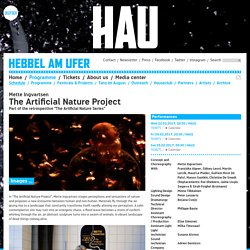
Group Global 3000 - gudrun arndt. P/Act for Art: Berlin Biennale Zeitung - Berlin Biennale. 1.

Should art consciously participate in current debates and serve as a critical voice in society respectably to generate democratic processes within society? 2. How should the situation be assessed in which almost the entire budget of existing art institutions is spent on infrastructure, with no money left for new experimental approaches, programming, new productions, or acquisitions? 3. What are possible alternative sources of cultural funds and how can they be realized in order to generate reliable and independent funding for cultural and artistic production?
4. 5. 6. 7. 8. 9. 10. Les débuts. Jump to Navigation lun. 13. février 2017.
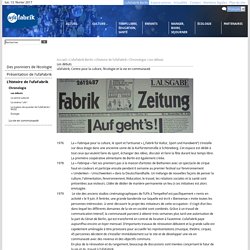
L’histoire de l’ufaFabrik. De 1921 jusqu’au milieu des années 1970, des films mythiques ont été réalisés au sein du site de production cinématographique « UFA-Film Kopierwerke », au sud de Berlin.
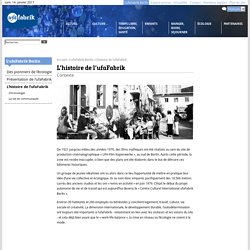
Après cette période, la zone est restée inoccupée, si bien que des plans ont été élaborés dans le but de détruire ces bâtiments historiques. Un groupe de jeunes idéalistes ont vu alors dans ce lieu l’opportunité de mettre en pratique leur idée d’une vie collective et écologique. Ils se sont donc emparés pacifiquement des 18.566 mètres carrés des anciens studios et les ont « remis en activité » en juin 1979.
C’était le début du projet autonome de vie et de travail qui est aujourd’hui devenu le « Centre Culturel International ufaFabrik Berlin ». PASSIVHAUS ENGELDAMM. Transition-Town Berlin-Friedrichshain-Kreuzberg. Berlin- Transition Town Pankow. For Cooperative Building and Living. Co-Housing in Europe #3 : The case of Berlin - New Europe. Housing is a major issue in most European cities due to housing shortage and lack of affordable houses.
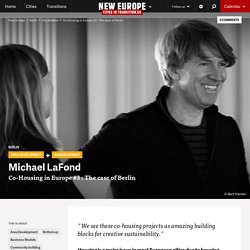
Martin-Gropius-Bau: Building with Timber – Paths into the Future. Based on selected distinguished national and international projects, the exhibition represents the state of the art in sustainable and modern timber architecture.

Netzwerk freier Berliner Projekträume und –initiativen. Austausch.
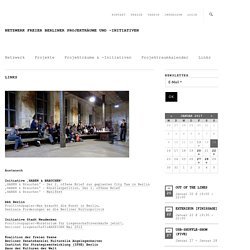
Project Spaces. Current Issues. Lilli Green® - Magazin für nachhaltiges Design und Lifestyle. Kunst und andere Nachhaltigkeiten – Art and other Sustainabilities.
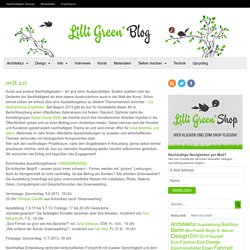
Endlich etabliert sich der Gedanke der Nachhaltigkeit als eine eigene Ausdrucksform auch in der Welt der Kunst. Schon einmal haben wir erfreut über eine Ausstellungstour zu diesem Themenbereich berichtet – Zur Nachahmung empfohlen. Seit Beginn 2013 gibt es nun für Kunstwerke dieser Art in Berlin/Kreuzberg einen öffentlichen Galerieraum mit festem Standort. Dahinter steht die Künstlergruppe Global Group 3000, sie möchte durch ihre künstlerischen Arbeiten Impulse in die Öffentlichkeit geben und so ihren Beitrag zum Umdenken leisten. Dabei nehmen sich die Künstler und Kuratoren gezielt jedem nachhaltigem Thema an und sind immer offen für neue Anstöße und Ideen. Kommendes Ausstellungsthema: GREENWASHINGEin kritischer Begriff – aussen grün/ innen schwarz – Firmen werben mit “grünen” Leistungen, doch ihr Kerngeschäft ist nicht nachhaltig.
Group Global 3000. Do you want support us as active artists, club members or donators? Künstlerische Interventionen im Museum für Naturkunde. HKW Haus der Kulturen der Welt. Anthropocene-curriculum. Intercalations: paginated exhibition. Orra White Hitchcock, drawing of strata near Valenciennes, 1828–40, pen and ink on linen, (1 of 61) | Courtesy of Amherst College Digital Collections This exhibition series in paperback format was developed in collaboration with Anna-Sophie Springer and Etienne Turpin for the SYNAPSE curators' network and is published as both paperbacks and web-based open access publications.
Technosphere. The twentieth-century celebrated technology as a way to achieve planetary unity and control. Yet today technics, nature, and human activity seem to combine in increasingly disorienting, uncontrolled compositions in which once-reliable distinctions lose their stability. How did we end up in this world of technological vertigo, this Mobius strip of world and planetary technics, wherein cause and effect, local and global factors, human and non-human agency, perpetually confuse and confound one another’s borders? What governs this constitution (or collision) of forces? The Anthropocene Project.
Art (and activism) in the age of the Anthropocene - Berliner Festspiele Blog. On The Laboratory of Insurrectionary Imagination, Climate Change, Art and – LIFE! “We cannot create if we cannot destroy that which already exists.” Tristan Tzara, Interview 1963, ORTF, Paris It’s the last night bus, number 60. We pass through the Northeast of Paris, the suburbs are asleep. Ein Terminkalender f�r die Berliner Musikwissenschaft. Do 02. Februar 2017 | 18:00 Uhr – 19:30 Uhr Humboldt-Universität zu Berlin Am Kupfergraben 5, 10117 Berlin Raum/ Saal: Hörsaal 501 Music and Performing Arts in the Anthropocene Era Ref.: François Ribac (Laboratoire CIMEOS, Université de Bourgogne, Dijon) Vortrag im Rahmen des Collegium musicologicum François Ribac is a composer and a sociologist, senior lecturer at the university of Bourgundy in Dijon (France), Laboratoire Cimeos.
He teaches sociology of culture and performing arts. As a composer, he has written and performed, with singer ands lyricist Eva Schwabe, seven (pop) operas, music for silent movies, television and theatre.